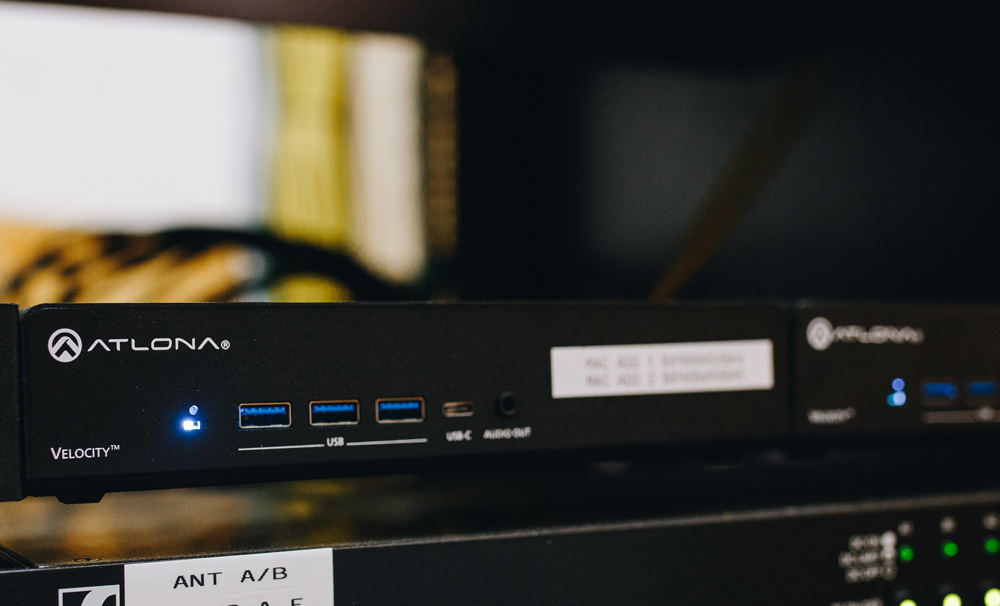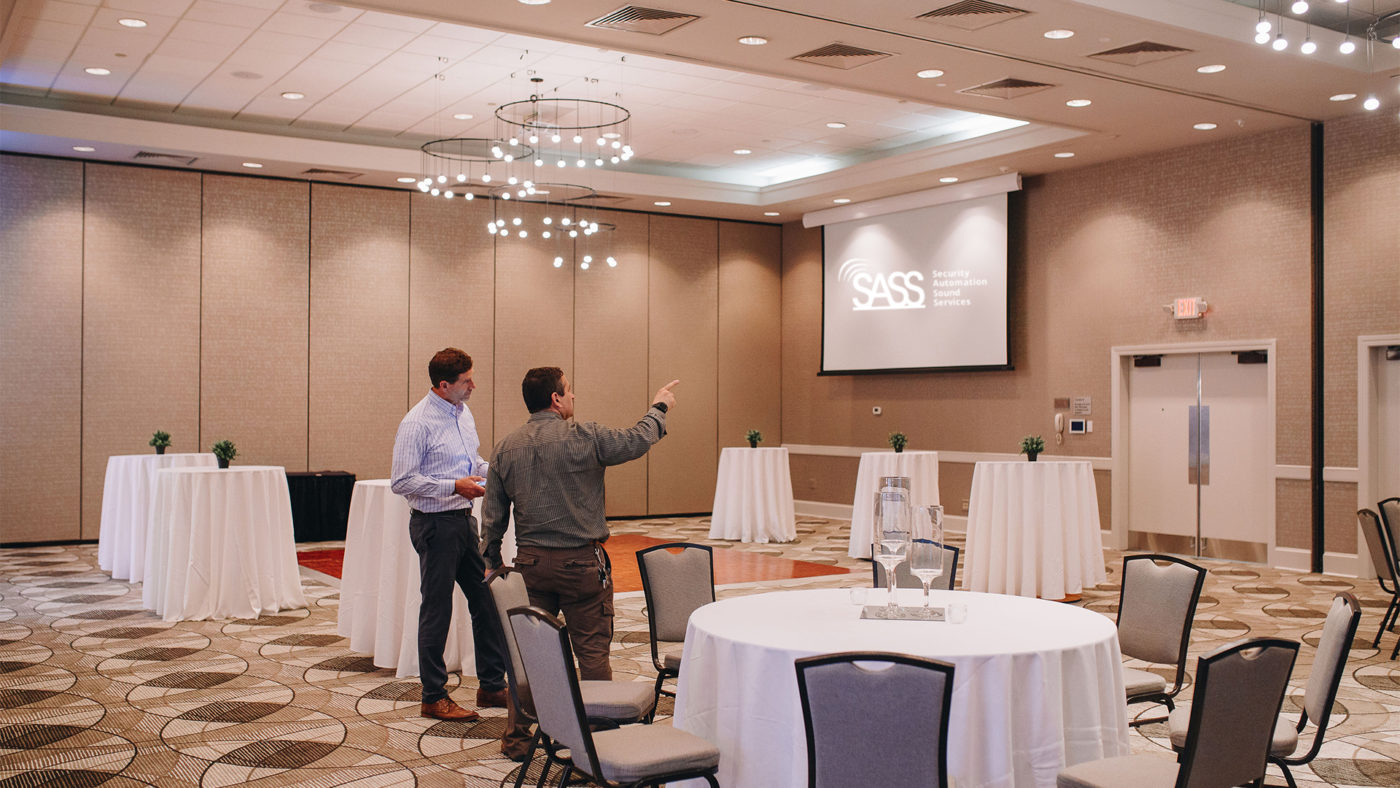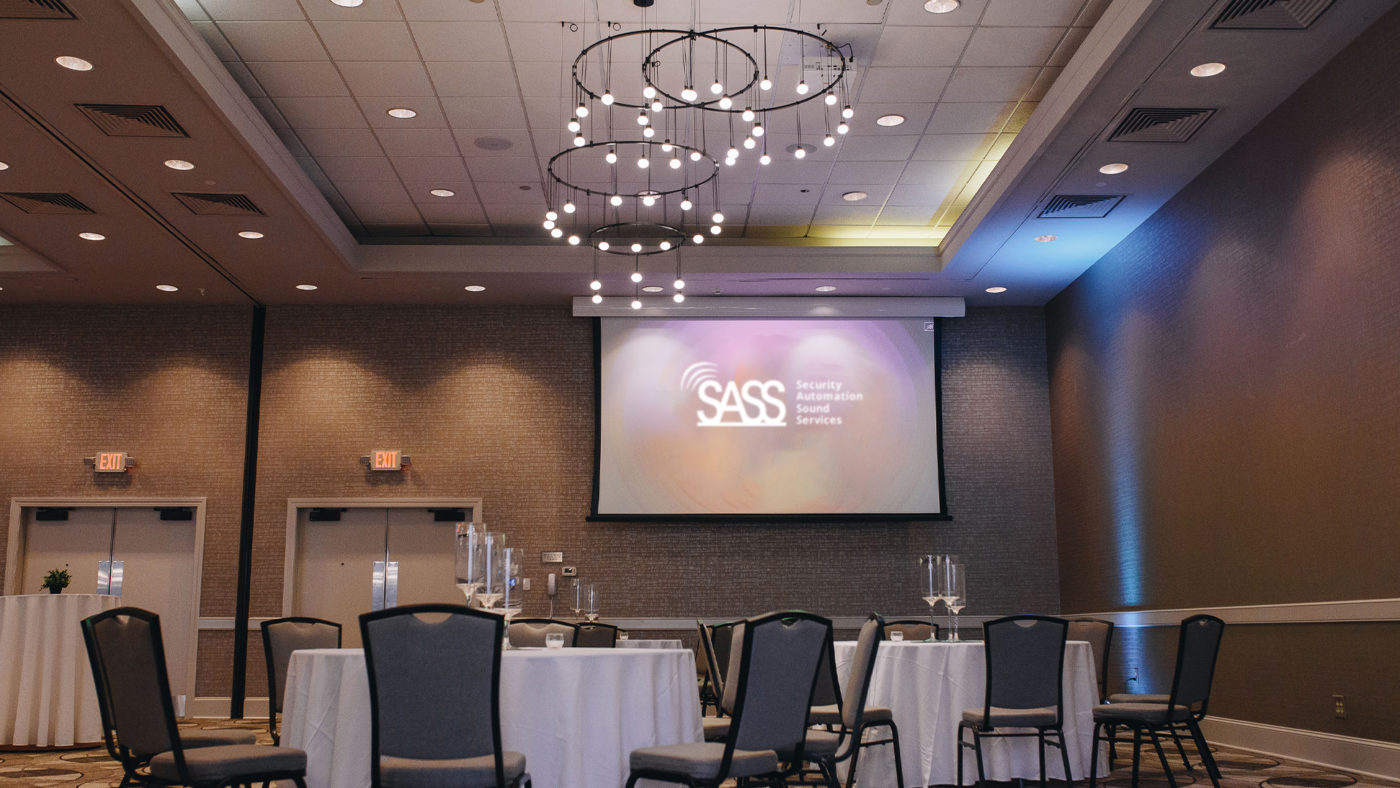Case Study: Hilton Hotel, Greenville, North Carolina
Systems integration firm SASS turns to AV over IP to feed large, diverse and intricate AV environments at Hilton Greenville in North Carolina
Download the Case Study PDFHotel properties often represent a diverse sampling of what’s happening in commercial AV integration. While technically the hospitality vertical, AV use cases are diverse when it comes to the hotel. From boutique independent hotels to the largest global chains, a hotel project today will often bring AV for meeting spaces, convention spaces, leisure, dining, retail and entertainment together into one project. The possibilities truly seem endless for the systems integrator.
“There were some corporate executives interested in the rooms, which are quite large – and we needed to jump in quickly to put a plan into action.”
– Stephen Gardner, Owner and President, Security Automation Sound Services
Simplified Programming
Network Convergence




“We don’t want our end users to be stuck. OmniStream and Velocity together offered Hilton Greenville the best of both worlds for a genuine AV over IP environment.”
-Gardner
| PRODUCTS FEATURED | ||
| Model | Description | Image |
| Atlona Omnistream | Atlona OmniStream is a flexible, scalable, and cost-effective AV distribution platform for meeting rooms, small to medium office buildings, restaurants, retail establishments, corporations, and even a campus or enterprise. OmniStream delivers the performance and dependability of traditional AV distribution, plus the unrestricted scalability and cost efficiency of integrating over data networks. |  |
| AT-OMNI-111-WP | The Atlona OmniStream 111 WP (AT-OMNI-111-WP) is a single-channel networked AV encoder for HDMI sources up to UHD @ 60 Hz and HDR (High Dynamic Range), plus embedded audio. It features a US two-gang, wallplate form factor, and includes interchangeable black and white wallplates and faceplates. |  |
| AT-OMNI-112 | The Atlona OmniStream 112 (AT-OMNI-112) is a networked AV encoder with two independent channels of encoding for two HDMI sources up to 4K @ 60 Hz and HDR (High Dynamic Range), plus embedded audio and RS-232 or IR control pass-through. |  |
| Velocity System | The Atlona Velocity System is an innovative IP-based platform for AV control, room scheduling, and asset management. It includes the Atlona Management System (AMS) for configuring and managing OmniStream and other Atlona devices over a network. Once installation is completed and handed over to your client, the system provides continual system monitoring, event notifications, and the ability to manage and schedule firmware updates. |  |







